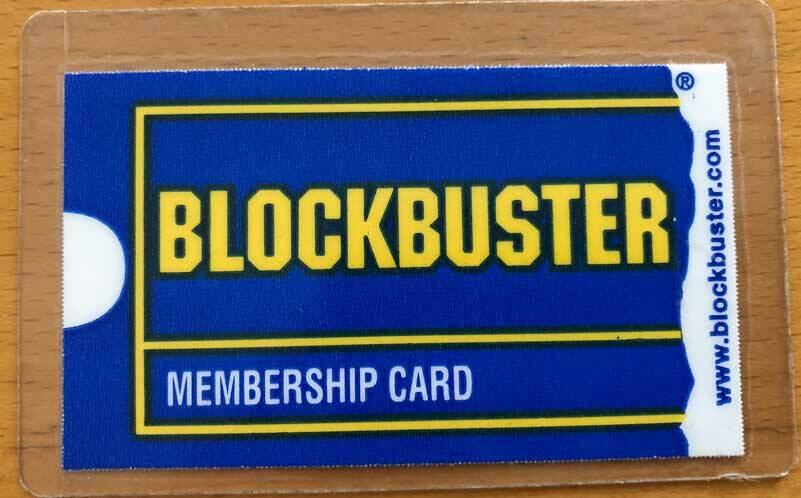By Morf Morford
Tacoma Daily Index
It seems like a lifetime ago, and in many ways it was.
Not that long ago Blockbuster was a $3 billion company that operated over 9,000 video-rental stores in the United States and employed more than 84,000 world-wide. And had 65 million registered customers.
Blockbuster was the route many movie fans saw themselves, in a small yet immediate way, becoming part of the film industry.
And, in an astounding – but profitable (at least in the short term) move to alienate its own once-loyal customer base, Blockbuster earned $800,000 in late fees (!) in one year. But in 2010, after turning down the chance to buy Netflix, Blockbuster filed for bankruptcy – with over $900 million in debt, and has essentially disappeared from the American cultural landscape.
The first Blockbuster opened in Dallas in 1985. By 1988 Blockbuster had more than 400 stores across the country. The theme and business model were so convincing that there were even plans (approved by the Florida legislature) to build a Blockbuster amusement park in Miami.
Competition
As always, the emergence of competition revamped the landscape of the marketplace and changed the rules yet again. Netflix offered essentially the same movie services (with DVDs) by mail. Gone were the evenings browsing movie titles in the brightly-lit store, and the semi-know-it-all film nerds behind the counter – and, of course, those dreaded late fees.
To compete with Netflix, Blockbuster joined forces with Enron (yes, THAT Enron).
To put it simply, making the transition from VHS to DVD to using mail delivery and finally streaming was not easy for Blockbuster – in fact it was impossible.
Actually it wasn’t impossible – they just didn’t do it.
Add hedge fund investors who manipulated and shorted the stock, customers lost forever due to late fee charges, and a lack of corporate vision for responding to a shifting customer base, the end was inevitable.
And not just for Blockbuster
For a variety of reasons, physical media lost its appeal. Why buy, and own and keep track of a video you are likely to watch once, if that, when you could stream it and have it in your queue (or not) and see it again (or not)?
Not only is Blockbuster gone, but along with them are the rows of videos on our shelves.
Many traditional and mid-century modern homes were constructed with built-in bookshelves. Homes (and apartments) of the 1990s had portable shelves of VHS tapes, and eventually DVDs that showed our interests and tastes in popular entertainment.
That has all been replaced by bingeing and posting about what we watch on social media.
Those carefully curated videos, that were many times the sound track or visual backdrop of relationships and stages of life have become the flotsam of life accumulating at yard sales or thrift shops.
But for a time, our taste in movies defined us – and our entertainment for the evening.
Who needed a pandemic when we had all become stay-at-home channel surfers cruising our multiple streaming services?
That was then
There was something simplistic, maybe even archaic, about poking around those shelves of movies you’d never see, and asking entertainment advice from a total stranger. At least there was a human being there who added to our conversations about what to choose for that evening’s movie, or as our excuse to talk about favorite films, stars or even genres of movies.
For the most part we used words like “movies” and more sophisticated aficionados used “films” – virtually no one in those movie rental days used the word “video” and before about 1995, no red-blooded America used the word “queue” in public.
Yes, Blockbuster left its mark. But perhaps the most important lesson we could draw is that it did leave.
How could a multi-billion dollar company, with market dominance and a customer base about the population of France, emerge, dominate and then evaporate like lost dream in over a little more than 20 years?
Who knows? But we’ll certainly see it happen again.
Maybe even on a faster scale.
Business seminars will study the life-cycle of businesses like Blockbuster and CEOs and managers may take notes and perhaps learn a few lessons, but the unrelenting bottom-line is that a few missteps can set the course for total dissolution and dismemberment of even the greatest, most breakthrough idea.
Those giants that currently dominate our headlines and conversations won’t be there forever.
The FAANGs (Facebook, Amazon, Apple, Netflix & Google) with a combined value of about $7 trillion certainly look like they will be here forever, but as with Blockbuster, the tide can easily – and irreversibly – turn.





